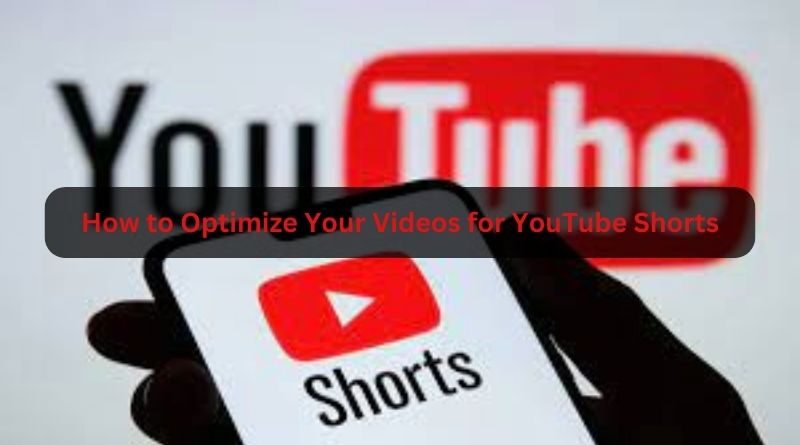How to Optimize Your Videos for YouTube Shorts
A social media behemoth, YouTube (not to mention, the second largest search engine on the internet). Shorts, a new way to watch and create on YouTube, was just introduced. YouTube Shorts is a platform for makers and artists who wish to shoot quick, catchy videos just using their smartphones.
Any resemblance? This is due to the fact that Shorts is essentially TikTok on YouTube. Shorts are vertical videos that last no more than 60 seconds. The primary distinction is that the videos appear in YouTube search results.
Currently, just a few YouTube stars can make YouTube Shorts in the app. The rest of us, though, can still benefit from this fantastic function. Simply upload and prepare your videos for YouTube Shorts. Why do you do that? Here to demonstrate, we are!
Pick the proper aspect ratio
Use a vertical or square aspect ratio whenever you are optimising a video for YouTube Shorts. Make careful to comply with a 9:16 or 1:1 aspect ratio to ensure that YouTube automatically classifies your video as a Short.
Reduce the length
YouTube Shorts has a brief video length constraint, just as TikTok. Trim the length of your video to 60 seconds or less before optimising it. It’s simple to trim your video when you edit it with Zubtitle. Once your movie has been uploaded, you will have the ability to rapidly trim the beginning and conclusion of your video using our straightforward point-and-click editor.
Add a hashtag

Put the hashtag #Shorts in your YouTube Shorts video’s title or description. Although YouTube suggests it, this step appears to be unnecessary. So adding the hashtag is the most secure technique to ensure that your movie is adequately optimised.
If you adhere to these three instructions, YouTube is likely to add your video to the Shorts “Shelf,” a special YouTube Shorts section inside the YouTube mobile app. Be patient if you don’t notice results right away. According to many YouTubers, it can take their Short film anywhere from 3 to 7 days before YouTube started advertising it on the Shorts Shelf. You’ll be able to view “Shorts” as a new traffic source under your YouTube analytics after YouTube begins promoting your video as a Short.
But to fully optimise your Short films to attract more viewers, you should put this fourth step into practise.
Make your thumbnail unique
Once your video has been submitted to YouTube Shorts, one problem you can encounter is that your uploaded thumbnail doesn’t show up. Rather, YouTube just picks a frame at random during the video. You may see what we mean by adding a Shorts section to your channel homepage by watching this video.
This is not ideal because an effective thumbnail can increase your click-through rate.
Including a headline at the beginning of your video is the best approach to get over this problem and prepare your videos for YouTube Shorts. And using Zubtitle will allow you to accomplish that with just a few clicks! You may resize your video, add subtitles, add unique headlines, incorporate your company’s logo, and do a lot more with Zubtitle.
Using a target keyword, rename your video file
Using an SEO tool, you’ll first choose the keywords you want your video to concentrate on, just like you would when optimising written content (you can browse popular YouTube SEO tools below these tips, or just click that link earlier in this sentence).
Prior to uploading your video to YouTube, you need first insert the chosen keyword into the video file itself. Why? As you’ll discover in the instructions below, there are only so many places you can safely enter this term on your video’s watching page once it has been released. YouTube can’t truly “watch” your video to see how relevant it is to your target keyword. However, when a video is posted, YouTube is able to read the file name and all the accompanying coding.
In light of this, change the “business ad 003FINAL.mov” file name to your chosen keyword. Don’t be embarrassed; we’ve all made mistakes like this during post-production. Using “house painting tips” as an example, your film’s file name should be “house-painting-tips” followed by the video file type you desire (MOV, MP4, and WMV are some of the most common that are compatible with YouTube).
Incorporate your term in the video title naturally
One of the first things that catches our attention when we look for videos is the title. The title should not only be interesting, but also succinct and easy to understand, as it is frequently what prompts the user to click to view your movie.
Although your keyword is a major factor in the title of your video, it also helps if the title closely resembles what the viewer is looking for. According to Backlinko’s research, there isn’t much of a difference between films with and without an exact keyword match in the title.
The association between keyword-rich video names and rankings isn’t always strong, according to report author Brian Dean, even if “adding your target phrase in your title may help you rank for that term.” However, as long as it blends seamlessly into a title that clearly describes what readers will see, it’s a good idea to optimise your title for this term.
Last but not least, be sure to keep your title reasonably brief. HubSpot campaigns manager Alicia Collins suggests keeping it to 60 characters in order to prevent it from being truncated on results pages.
Make your video description more effective
Initial considerations: Google states that 1,000 characters are the standard maximum for YouTube video descriptions. However, keep in mind that your audience most likely came to this page to watch a video rather than read an essay.
In the event that you decide to write a longer description, bear in mind that YouTube only shows the first two or three lines of text, or roughly 100 characters. To view the complete description after that, users must click “display more.” We advise placing the most relevant information, such as CTAs or important links, near the front of the description.
Regarding optimising the video itself, it doesn’t harm to include a transcript, especially for those who must watch it without sound. Nevertheless, Backlinko’s investigation also failed to uncover any connection between descriptions that were optimised for a specific keyword and the positions for that term.
Dean takes care to avoid advocating the complete removal of an optimised description. According to him, “the suggested videos sidebar is a big source of views for most channels,” so having an optimised description will help you appear there.
Add well-known, relevant keywords to your video’s tags
In order to let people know what your video is about, YouTube advises utilising tags. But you’re not just educating your audience; you’re educating YouTube as well. The platform employs tags, according to Dean, “to comprehend the content and context of your video.”
By doing this, YouTube is able to link your video to other videos that are similar to it, which can increase the audience for your material. But be selective with your tags. In fact, Google may punish you if you employ an irrelevant tag in the hopes of increasing views. A healthy balance of common and long-tail keywords—those that address questions like “how do I?”—should be used in your lead copy, just like you did with your description.
Sort your video by topic
A video can be classified under “Advanced options” after it has been uploaded. Choosing a category is another approach to organise your YouTube video with related content so that it appears in various playlists and is seen by more viewers who fit your target demographic.
It might not be as easy as it appears. In order to decide which category each video belongs in, a thorough process must be followed. Identify the top creators in the category by responding to questions like: What are their specialties and what do they excel at?
- Do the audiences of related channels within a specific category exhibit any patterns?
- Do videos in the same category have characteristics like production quality, length, or format?



